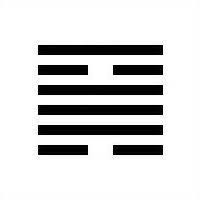Information
-
Audit Title
-
Client / Site
-
Conducted on
-
Prepared by
-
Location
-
Personnel
Required Documentation: Phase = Design Audit
Machine Safety Checklist
-
Machine Name:
-
Person completing Checklist at Design Phase:
-
IHE resource confirming the Checklist Accuracy and Machine Safety:
Declaration of Conformity is available and includes:
-
DESIGN COMPLETE AUDIT:
-
Declaration of Conformity is available and includes
-
List of regulations (Directives for CE) applicable to the machine.
List of the applicable standards, plus other standards and technical specifications used to achieve the overall design of the machine.
-
Instructions/Drawings/Lists are available for safe:
-
installation/de-installation
-
operation (in the language of the machine operator)
-
maintenance & inspection (including spare part lists, electrical / pneumatic / hydraulic drawings, control circuit and safety circuit drawings)
-
Safety device listing and inspection schedule
-
If CE compliance required, CE label is on equipment in case of stand-alone machine
-
Drawings, calculations; test results necessary to check conformity with health & safety requirements, applicable regulations/directives and any other validation tests.
-
Machine Manufacturer's risk assessment available assuming delivery was agreed in purchasing contract
-
Safety report of 3rd party inspection(s) available assuming delivery was agreed in purchasing contract
-
Functional validation check completed and documented covering all hazardous energy safety devices and circuits of Hazardous Energy Control and Islolation
-
Inspection list and inspection procedures of all hazardous energy safety devices documented per CBA 2050.
-
Safety Map(s) for each machine showing energy isolation and control devices.
-
Hazardous energy control and isolation procedures complete.
Electrical Engineering Review
-
General
-
A P&G PC&IS engineer checked cable/wiring sizes and circuit protection coordination. Spot checking of a large design is sufficient if no errors are found.
-
Control, instrument and I/O supply voltage is 24VDC, 0 VDC conductor grounded
-
All circuit breakers rated min. 10 kA. acc. IEC 60 947.2
-
Separate PE circuit / copper grounding bar with individual wires to equipment and metal parts
-
Components in cabinets are labelled on the backplane, as per circuit diagrams.
-
All components in a cabinet are touch-safe (IP20).
-
All exposed equipment > 48 VDC and power circuits not isolated by main disconnect have lexan cover + hazard label
-
All Circuits not isolated by main disconnect (lighting, outlets, and PLCs) are identified by color (ORANGE) or labeled inside the control enclosure. In addition, a label shall be placed next to the main disconnect outside the panel indicating that it does not de-energize all conductors.
-
No automatic restart possible after fault or emergency stop.
-
Warning text on VFDs and Servo drives for residual voltage that is 60V or more 5 seconds after power is removed.
-
Transformers have proper overload protection and the secondary side is grounded.
-
Plugs and sockets are color coded or non-interchangeable (such as keyed to prevent improper connection)
-
Sufficient access and working space shall be provided and maintained about all electrical equipment to permit ready and safe operation and maintenance of such equipment. This applies only to panels likely to require examination, adjustment, servicing, or maintenance while energized
Cabling & Wiring
-
Power, instrumentation and communication cabling is installed with distance separation (30cm is suggested) or with a grounded metal separator. All insulation of cables in the same raceway are rated for the highest voltage in the raceway.
-
Cables entering and leaving closed cable trays by means of cable glands
-
Cables protected against mechanical damage where needed.
-
Only 1 wire per terminal allowed unless the terminal is specifically designed for that
-
Ground wire to cabinet door separate from wire bundle, as large as the largest power conductor on the door, and min 6 mm2
-
For EU, stranded wires need to be crimped with a ferrule unless the nature of the termination point of that wire excludes the reasonable use of ferrules.
-
Moving cables (e.g. telescope arms, flexible cable trays, …) need to be highly flexible and made for that purpose.
-
Cables need adequate stress relief where required
-
Cables/ wires will be labelled on both ends with the same unique numbering and match circuit diagrams and cable lists
-
Wire colors: <br>Under power when main power isolator is off : Orange<br>Power : Black , Neutral : White (U.S. and global) or Lt. Blue (EU Only), Ground : Green-Yellow<br>AC Control (not recommended) : Red<br>DC Control : Blue, DC Common : White w/Blue Stripe
Cabinets & enclosures
-
If enclosure temp exceeds 40 degree C ventilation is required.
-
Cabinets must be accessible from ground floor or fixed platforms.
-
All field equipment min. IP 54 or Nema 12
-
Cabinets outside building min IP 44
-
Enclosures with voltages > 48 V marked with voltage level and flash sign.
Indicators and controls
-
Acoustic and/or visual warning on machine before start-up
-
Colors of lamps and push buttons are according EN 60204.1/NFPA 79 :<br>Color General Specific<br>Red Emergency, Critical condition Emergency stop, Immediate action req'd.<br>Yellow Caution, abnormal condition Hazardous condition or impending shutdown<br>Green Normal Start, run, normal<br>Blue Auxiliary Reset, mandatory action<br>White Auxiliary Power on, standby, etc...<br>Black Auxiliary Stop/Off
Electrical Power Isolation
-
Isolator (disconnect) height between 0.6 m and 1.7 m above the floor, and is padlockable in the off position only.
-
Location (convenience) of disconnects facilitate the expected lockout behavior
-
Acceptable verification method is provided. Options: Green light and Pilz voltage sensing safety relay per PCP 345, Push to start per PCP 345, Voltage vision systems (only for mechanical maintenance), visible blade disconnect. Where IEC 60 947.3 standard is followed (i.e. EU), disconnect handle position in off position is an acceptable verification method.
-
Electrical power isolators (disconnects) are properly rated and listed for use as disconnects. For EU requirements, disconnects shall be marked utilization category AC-23B acc IEC 60 947.3, and rated for nominal power and/or stalled motor current of largest motor. For U.S. requirements, disconnects shall be UL listed for use as a disconnect (see NFPA 79 Chapter 5.3.2 for allowed types) and be rated for the application per the requirements of NFPA 79 Chapter 5.3.3.
-
Electrical power isolator is red on a yellow background if it has an emergency stop function, otherwise must be black on grey.
Pneumatic Power Isolation
-
Isolator (disconnect) height between 0.6 m and 1.7 m above the floor, and is padlockable in the off position only.
-
Location (convenience) of disconnects facilitate the expected lockout behavior
-
Acceptable verifcation method is provided. Options: Preferred method is visual verification of 0 pressure such as using a pressure gauge mounted immediately downstream of the pneumatic isolator. Also will accept audible exhaust combined with visual verification that the shaft that blocks supply air and exhausts downstream air is in off position (example: Versa Valve).
-
The pneumatic isolator relieves the pressure downstream of the isolator when in the off-position (air dump valve).
Main Electrical Power Isolation
-
Machine is equipped with a main power isolator to isolate all electrical power to the equipment
-
The electrical panel cannot be opened unless the power is isolated (Mark will update this item)
-
Main isolator is labelled as such.
Individual isolator devices (maintenance disconnects)
-
Disconnects are directly interrupting the power to the device (motor, heater)
-
Disconnects for VFD driven motors have a early break auxiliary contact wired in the VFD enable.
-
Disconnects are unambiguously identified to the equipment that they serve (via placement and / or labelling)
Electrical Power Safety Circuit
-
Power to all hazardous motion is removed on fault (failsafe)
-
Main power isolated via 2 contactors (non solid sate / semiconductor) in series or via an approved safe-off function in Servos' and drives.
-
Power isolation contactors have positive guided contacts.
-
Contactors are controlled via a Category 3 + monitoring Safety System
-
Power is only restored when e-stop, LOTO, Guard fault is removed, and separate reset signal sent to safety relay
-
Machine does not automatically restart when safety circuit is reset
-
Safety relay/controller is identified inside panel and is protected from tampering by signage and guarding
-
Guard locking is fail-safe, i.e. power required to unlock
-
Machine stops as fast as possible on fault
-
Additional wiring to PLC input to identify which safety device opened. (NOTE:This is not necessary if a Safety PLC is used and the information about individual interlock devices can be gathered from there. In case of daisy-chained safety devices, the additional contact should be wired to the PLC for monitoring.)
-
If a safety PLC it is used, a validation plan with safety signature is developed and completed.
Pneumatic Power Safety Circuit
-
Air is isolated and vented via an air dump valve certified by third party as category 3/4.
-
There is no hazardous air retained in the system after isolation
-
Vented air is muffled if needed to prevent noise hazard, and positioned to eliminate eye hazard from air or dispersed particles.
E-Stop Circuits
-
Machine has at least one e-stop method … either an e-stop circuit or a disconnect device designed for e-stop function.
-
All hazardous motion stops as fast as possible when e-stop pressed
-
All e-stops meet category 3 requirements unless MRA shows otherwise and HS&E concurs
-
Additional wiring to PLC input to identify which safety e-stop opened. (NOTE:This is not necessary if a Safety PLC is used and the information about individual e-stops can be gathered from there. In case of daisy-chained safety devices, the additional contact should be wired to the PLC for monitoring.)
-
All e-stops are red mushroom button on a yellow background or tension style pull cords.
-
All e-stops are identified with the equipment they stop, need local manual reset and are labelled with an identifying number.
-
Pull cords have a red plastic covered cord and initiate an e-stop both if pulled or if not tensioned.
-
Blue reset push button for emergency stop relay on main control or power panel
-
E-stops are mounted so that inadvertant actuation is prevented, while still allowing easy actuation.
SLS systems
-
SLS system is installed, as per circuit diagram and as per manufacturer's (or P&G PCP345) requirements, and sealed.
-
SLS system is checked functionally and documented
Mechanical Engineering Review
-
Guards
-
Guards are designed to make access to mechanical hazards impossible to reach
-
Gaps or openings in guards comply with the safety distances in table from CBA 2051
-
For barriers guards, the height and position of the barrier complies with table from (CBA 2051)
-
All mechanical hazards below 2.7m are guarded.
-
All fixed guards require tool to remove.
-
All non fixed guards (called movable guards) are interlocked with all sources of hazardous energy that are exposed when guard is opened.
-
All guards that are opened or removed daily comply with movable guard requirements (including interlocking, attachment to machine with tamper resistent fasteners)
-
Guard locking exists on movable guard where stopping time exceeds approach time. (reference stopping distance formula in CBA 2051, ANSI B11.19, or EN ISO13855)
-
Guards are durable for foreseeable machine life and conditions (consider hinges, slides, handles, latches, environment, etc.).
-
Guards are of sufficient strength for foreseeable loading. Consider unintended forces such as someone falling against or stepping onto the guard.
-
Guards are of adequate fastening and rigidity to prevent deformation that could violate guard safety distance tables. Consider the number and position of supports and guard material.
-
Guards do not create new hazards (consider pinch points, gap at door hinge, risk of falling (avoid guards that raise/lower), sharp edges or corners, bump hazards, ease and safety of opening or removal.)
-
Guards are designed to accommodate all product sizes; while providing adequate protection.
-
Guards allow necessary observations and essential work tasks while in-place. (Consider critical and frequent adjustments, gage and process observations, etc.) Expanded metal (mesh) guards should be darker than the background and matte finish for optimal observation.)
-
Temperature and chemical hazards are assessed and protected.
-
Lighting is sufficient for the routine work tasks inside the guarded area
Individual Safety Zones /Integrated Equipment
-
A risk assessment and reduction completed on the points of interface between machines or between cells or zones within a machine.
Machines with openings for Material/Product Handling & Conveying
-
Material infeed/outfeed stations prevent access to machine hazards and accommodate all product sizes.
-
Material outfeed station control circuit prevent(s) hazards from materials exiting unexpectedly (example: impact or pinching hazard from material movement)
Light Curtains, Scanners, Pressure Sensitive Mats
-
For safety devices with approach reaction time, position the device following distance formula. (reference stopping distance formula in CBA 2051, ANSI B11.19, EN ISO13855)
-
Positioned to ensure protection from hazard (Safe distance formula )
Labelling
-
Disconnects/isolators/valves shall be labelled in the language of the users. Label shall unambiguously identify the device(s) that it affects
-
Equipment is labelled with signs to warn operators about hazards, which could not be eliminated by design (e.g. hot surface, laser, hazardous chemicals, electrical hazard, etc.)
-
Equipment is labelled with signs for required PPE (e.g. gloves, goggles, ear plugs,…)
-
Is the machine intended to use AMEC? If yes: AMEC risk assessment is completed, AMEC label is applied (according to CBA 2050)
-
Safety related labelling must be in the language of the operator
Robotics -
-
Definition: Robot: An automatically controlled, reprogrammable multipurpose manipulator programmable in three or more axes which may be either fixed in place or mobile for use in industrial automation applications.
-
Robots meet requirements of RIA 15.06 /ISO 10218, including risk assessment following standard.
-
The robotic envelope is sized to accommodate entire extension of robotic arms and end of arm tooling, or utilizes safety rated robot limiting.
-
The minimum control circuit for robotics is Category 3 with monitoring and also includes lockout capability.
-
Access to the envelop is controlled such that only one person can be in the envelop with robot energized. Person must have pendant with hold-to-run controls.
-
While envelope is occupied by personnel it can only be operated by pendant at less than 250 mm (10in) per second
-
Non mechanical limiting devices (programmable) are to be avoided, but where necessary, must be isolated from general maintenance access
-
Robotic reset / start control panel(s) required verification that robotic envelop is clear. The entire hazardous zone must be viewable from the reset position or from multiple and sequenced reset positions.
-
If P&G is the integrator, P&G Engineering completes a third party inspection to confirm compliance with standard.
Other Selected HS&E Competencies
-
Laser radiation
-
Laser hazards are guarded according to source classification per CBA130 and local reg. ( ANSIZ136, EN 60825)
-
Verify laser manufacuter plate includes the classification of the laser power source and that appropriate hazard warning labels are affixed
-
For Class 3b/4, apply the following:
-
Class 3 plus monitoring interlocked to power supply of laser, or redundant/monitored control to shutter
-
Accessible stations within Nominal Hazard Zone (NHZ) protected to Class 3 plus monitoring (as above)
-
Installation is reviewed by a qualified Laser Safety Officer (for Class 3b, 4), and, if required, appropriate action completed.
Noise
-
Machine meets noise targets in contract at VAT and when installed at site.
Fall Prevention and Protection
-
Machines having routine tasks (routine definition: at least once every two weeks or duration of >4hrs total in any sequential 4 week period) which require access greater than 1.2 m (4 ft.) have a fixed platform or HS&E leader approves moveable platform approach. Non-routine tasks have Fall Protection system design with certified anchor point.
Ergonomics
-
All lifting tasks that exceeds 5 kg (10 lbs) conform to the recommended weight limit determined using the NIOSH Lifting Calculator (or other prominent industry standard). Include calculations in machine safety documentation.
-
A risk assessment is conducted (typically using BRIEF survey) on repetitive tasks and the risk factors reduced to an acceptable level.
Miscellaneous Hazards
-
Machine parts and components are checked and verified to ensure there are no sharp edges, corners that could create a cut.













